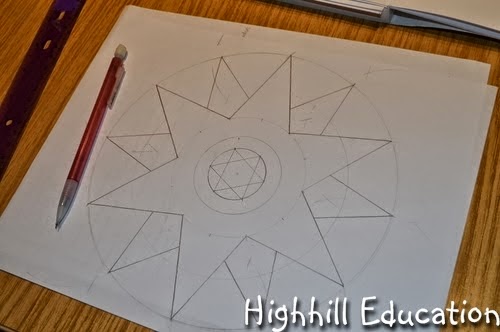This project meets all of my criteria for a good craft.
Simple? Check.
Cheap? Check.
Adorable? Check. Check.
Here's how we made it and what you need.
Craft foam in a color of your choosing
Small, clean empty soda bottle
Yarn
Darning needles
Hot glue (optional)
Button
Scissors
Turtle template (download mine free here or get creative and draw
your own)
Pen or fine-tip permanent marker
First trim your bottle down so you just have the very
bottom (parents should exercise caution and do this step if children are not
proficient with scissors).
Now trace the turtle pattern or draw your own onto the
craft foam. Cut out.
Draw eyes and other features. My boys were too excited to
spend much time on details. They wanted to get their turtles in the water! We're
lucky "Lightning" and "Green Lantern" were even given eyes.
Next, apply a few dots of hot glue on the cut edge of
your bottle and place it on your turtle, giving him his shell. The glue is
optional, but helps to keep it in place as little hands stitch thread over and
around the shell. (In hindsight, you could probably just glue the shell on, but
I like the look of the yarn and it gave my kids some great fine motor practice.)
Then, thread long lengths of yarn onto a darning needle.
Tie at knot at one end. Have kids pull the needle up from the bottom of the
turtle and bring it back down through the foam on the other side of the shell,
stitching a asterisk type of pattern. Sewing was my oldest son's favorite part
of the project (who knew?!?). When done, either knot the yarn on the back or
glue it down.
Now add a button with glue to the top of the shell where
the yarn intersects to keep it from slipping off the turtle's back.
Take your turtles to the water (in our case, the bathtub)
and watch them float on the surface!
Want a great book to pair
with this activity?
Our oldest son (age 9) really liked Gail Gibbon's book Sea Turtles. It covered everything from the anatomy of sea turtles to the threats to their existence. Details, details, details, and beautiful watercolor illustration to go with them - that's what you and your kids can expect.
Our youngest son (age 5)
and I read the Level 2 National Geographic Kids easy reader titled Sea Turtles. Author Laura Marsh,
provides basic information in the main text and the opportunity for readers to
dig deeper with turtle terms, extra facts, and even fun jokes. This book is
scalable to kids of many ages. Pick how much to read and share depending on
your child's attention span and level of comprehension. Or for children who are
reading, hand them the book and let them choose!









.jpg)




































